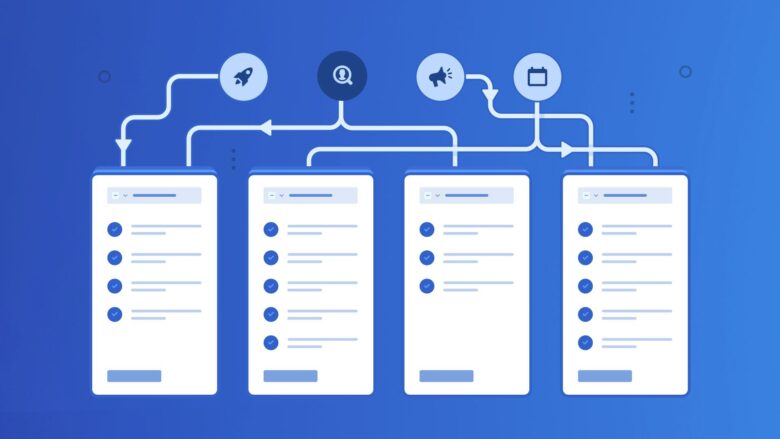A portfolio is a collection of projects, programs, and procedures managed together and optimized for an organization’s financial and strategic objectives. The functional or organizational levels are appropriate for managing a portfolio. A project portfolio may also be called a project backlog or project backlog.
Unlike a project with a clearly defined conclusion or deliverable, a portfolio represents a more strategic planning committee to continuously optimize resource allocation, prioritization and scheduling across multiple projects. A project portfolio management software has an end goal or deliverable that must be completed.
What Exactly Is Meant By The Term “Project Portfolio Management”?
Project portfolio management refers to analyzing and optimizing the costs, resources, technology, and procedures associated with the projects and programs included within a portfolio. Portfolio managers or an office dedicated to project management are generally responsible for carrying out the tasks involved in project portfolio management.
The primary purpose of portfolio performance management (PPM) is to ensure that all of the outcomes included within the portfolio contribute to achieving the organization’s strategic goals and business objectives. The portfolio manager or the PMO accomplishes it via business analysis, evaluating budgets and forecasts, reducing risk, and managing stakeholder expectations.
Guidelines To Follow For Efficient Management

Using these tactics will hasten the progress you make with your designs. Many initiatives have failed because the techniques used were improper or because the protocols needed to be followed step by step.
Optimization And Categorization
The process of grouping the many available components to facilitate subsequent decision-making. This approach aims to arrange the required elements into suitable market classes to apply a standard set of decision filters and parameters for evaluation, classification, priority, and balancing.
Regardless of where they came from within the business, the components of a particular entity serve the same overarching goal and may all be graded using the same grading system. The members are categorized in such a way as to assist the business in ultimately aligning its investments and risks across all of its strategic groupings and goals. A strategic strategy will be used to inform the specification of the categories.
Competencies Required For Portfolio Managers

Portfolio Managers have to cultivate their soft skills and make it a point to improve such talents continually. A Portfolio Manager’s job is ensuring the organization achieves its financial and strategic objectives.
A Portfolio Manager’s primary responsibility is to facilitate the efficient and successful administration of portfolios for the organization’s benefit at all levels. Portfolio Managers are responsible for providing analysis, insights, and recommendations to help with strategic governance choices. Speak the language of the business.
Potential Losses In A Portfolio
Risks differ from investment to investment. Every investment you make has with it the possibility of a loss. There is a trade-off between the potential for higher long-term returns and the higher levels of uncertainty that come with investing in the future. Therefore it’s essential to spread your money around.
It’s also worth noting that doubling down on these dangers within a single investment raises the stakes significantly. It is referred to as the portfolio’s aggregate risk, a more considerable overall risk. Include assets to achieve diversification in a portfolio with varied degrees of risk.
Policies For Managing Investment Portfolios

Project portfolio governance refers to the steps taken to identify, select, monitor, prioritize, and coordinate the development of projects within a company or business unit. When launched on a reliable foundation, ongoing portfolio management, and monitoring offers project portfolio managers a chance to realize their strategic goals. A systematic framework is also propelling it.
The Work You’re Most Pleased With Should Be Shown In Your Portfolio
You need to utilize your valuation criteria and do a cost-benefit analysis to maximize the value you add to your portfolio. Using these standards, we may estimate how much each project is worth regarding the whole portfolio.
Several elements, such as payback time, ROI, and risk, may be considered while deciding on a project.
Set The Company’s Objectives In Stone

Before you can even think about portfolio management, you need to have a firm grasp of the company’s long-term strategic goals and short-term business objectives. Business financial targets and customer value should be assessed alongside strategic planning to ensure they are realistic and achievable.
The first stage in project portfolio management is reaching a stakeholder consensus on the portfolio’s strategic goals. The next step is to establish the valuation standards that will be used to choose funded projects.
Compile A List of Potential Projects for Your Portfolio
After you have determined the strategic objectives for your portfolio, it is time to start constructing it. You’ll need to begin amassing projects to achieve this goal. These might be projects that are currently being worked on or ideas for projects that are sufficiently comparable to be handled concurrently. Collect data about project management and devise evaluation criteria to choose the best option.
Organize Tasks That Are Linked Together

Portfolio managers are provided with the data they need to make better business choices on costs, resources, and other topics when projects are grouped in a portfolio and reports are generated based on the portfolio as a whole rather than on each project.
Maintain an organized record of all the projects in your portfolio using the overview section. Review everything in your portfolio, including its current state, budget, and other aspects, in one convenient location. You can now employ resource allocation to improve the performance of one of the projects that may be falling short.
Set Dependencies
There are a variety of tasks to choose from. Some can begin their work after others have completed theirs, while others must start or end their position at that exact moment. Understanding which of your responsibilities rely on others to maintain a healthy portfolio is essential.
To prevent teams from being blocked, link tasks that rely on one another by dragging one to the other. During the project’s execution, this measure protects these dependent tasks from being overlooked. You may filter by the critical path when all dependencies have been established.
Conclusion

Over the last several years, project portfolio management has become more valuable. Portfolio management is more structural than project management, meaning it needs C-level executives’ engagement to be successful. PPM enables an organization to reach a level of technological advancement that allows project management information systems to include the data required for effective decision-making.

